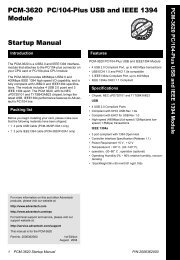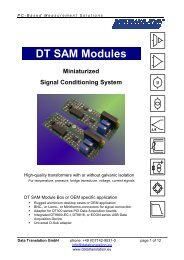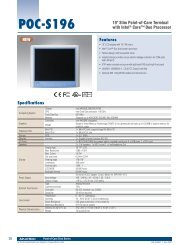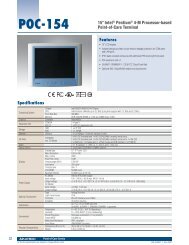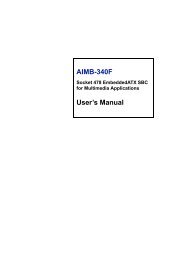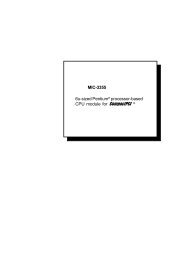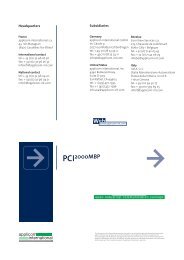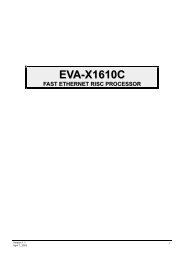1747-6.22, Backup Scanner User Manual
1747-6.22, Backup Scanner User Manual
1747-6.22, Backup Scanner User Manual
Create successful ePaper yourself
Turn your PDF publications into a flip-book with our unique Google optimized e-Paper software.
4-54 Operating Your SLC 500 <strong>Backup</strong> System<br />
Publication <strong>1747</strong>-<strong>6.22</strong><br />
Secondary Processor Remote Programming<br />
Important: The programming device must be connected through the<br />
DH+ network and must not bypass the relay in the<br />
<strong>1747</strong>-BSN module (if the programs in both processor<br />
are identical;e.g., if both DH+ mode addresses are the<br />
same). If you were to connect the device directly to a<br />
processor, it must be connected to the primary processor.<br />
Therefore, if your system were to switch to the<br />
secondary system, you must then move your device to<br />
your new primary processor.<br />
In the <strong>1747</strong> backup system, only the primary processor is connected<br />
to the link. The secondary processor is not physically connected, but<br />
it communicates with the secondary <strong>1747</strong>-BSN module making this<br />
processor think that it is on the DH+ network. This separate link<br />
prevents Data Highway faults in the secondary processor.<br />
The <strong>1747</strong>-BSN backup module provides remote programming<br />
capability for your secondary processor. This means that even with<br />
the programming device directly connected to the primary processor,<br />
the secondary SLC-500 processor memory can be programmed and/<br />
or monitored.<br />
The primary <strong>1747</strong>-BSN module provides an access point for a<br />
programming device to access the secondary processor. Using the<br />
<strong>1747</strong>-BSN module, you can communicate from a programming<br />
device across the backup modules to the secondary processor. You<br />
must assign both the primary and the secondary processor the same<br />
node address in the DH+ link. The <strong>1747</strong>-BSN module reserves the<br />
subsequent node address as an access-point address to the secondary<br />
processor; that is, this address is accessed by a programming device<br />
in order to program the secondary processor.<br />
This means that if you set both processors node addresses to n, the<br />
programming device can communicate with the secondary processor<br />
with the node address n+1. Therefore, do not use node address n+1<br />
for any other device on the DH+ network.<br />
For example, a primary processor with node number 16 on DH+<br />
network has the same address switch setting as the secondary<br />
processor node.<br />
However, in this situation, the terminal addressed to station 16<br />
attaches to the primary processor and the terminal addressed to<br />
station 17 attaches to the secondary processor.<br />
Important: It is recommended to assign the same node address (n)<br />
for both processors (primary and secondary) in a<br />
redundant system. You must also reserve the next node<br />
address (n+1) because this address is the access-point<br />
address to the secondary processor.




